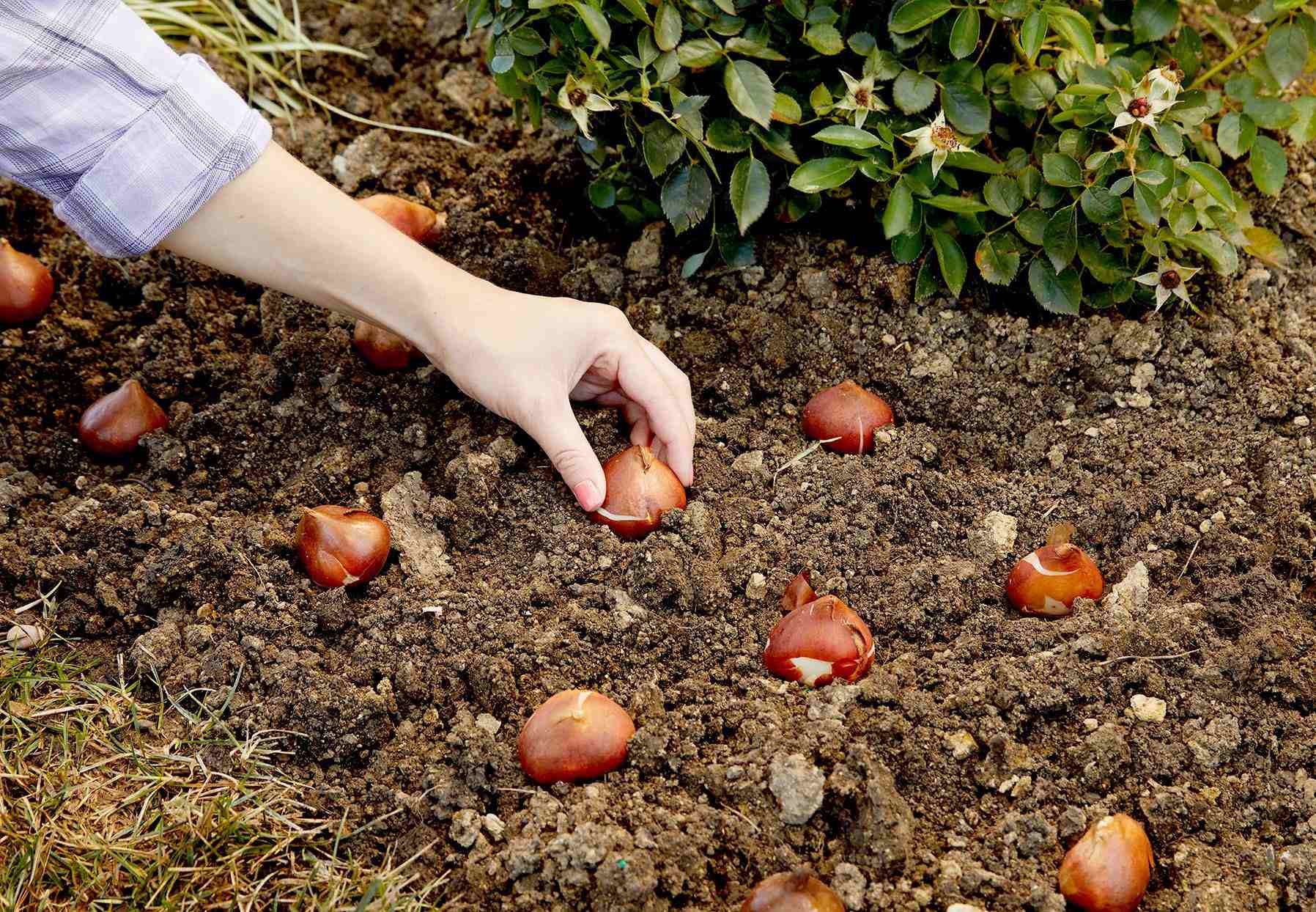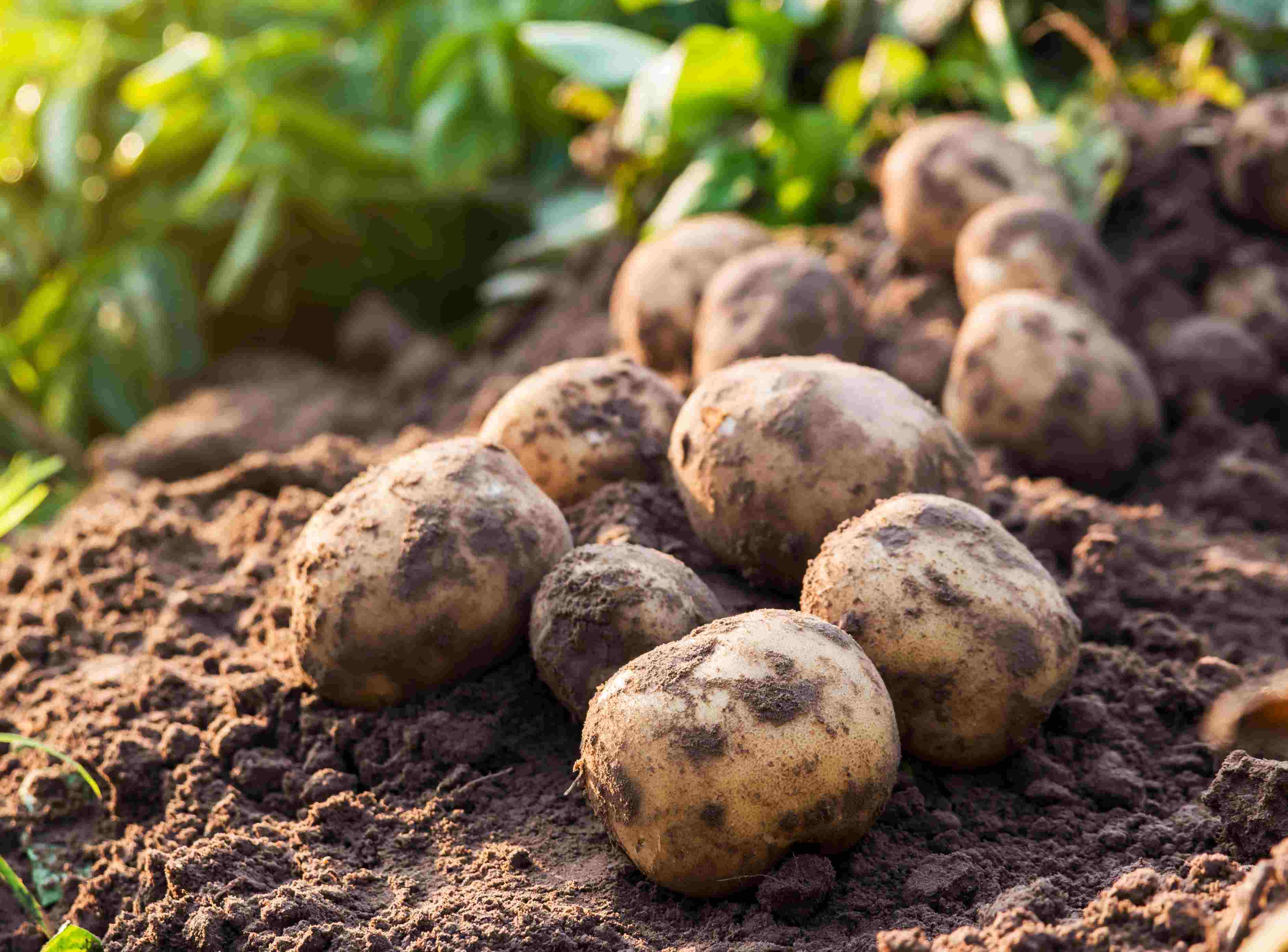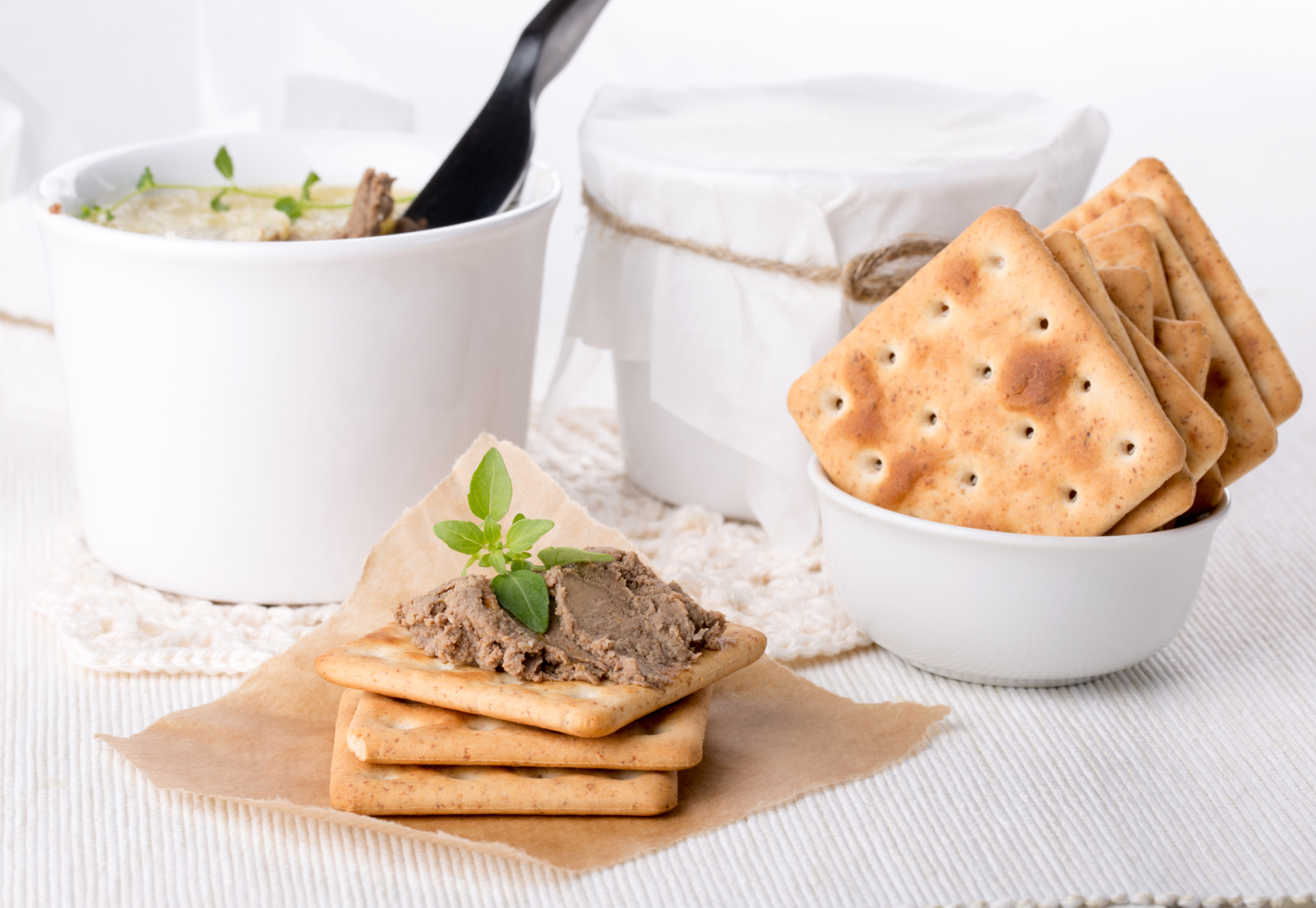Home>Types of Gardening>Ornamental Gardening>How Long Can I Keep Bulbs Before Planting


Ornamental Gardening
How Long Can I Keep Bulbs Before Planting
Modified: January 22, 2024
Learn about ornamental gardening and how long you can store bulbs before planting. Find out the best practices to ensure successful bulb growth.
(Many of the links in this article redirect to a specific reviewed product. Your purchase of these products through affiliate links helps to generate commission for Chicagolandgardening.com, at no extra cost. Learn more)
Table of Contents
Introduction
Ornamental gardening is a fulfilling hobby that allows individuals to express their creativity and enhance the beauty of their outdoor spaces. One popular aspect of ornamental gardening is the cultivation of flowering plants through the use of bulbs. Bulbs are renowned for their vibrant blossoms and their ability to add a burst of color to any garden.
However, before embarking on your bulb-planting adventure, it’s essential to understand how long bulbs can be kept before planting. This knowledge will help you plan and prepare, ensuring the success of your ornamental gardening endeavors.
Proper bulb storage is crucial in maintaining their viability and ensuring they bloom to their full potential. It allows gardeners to have a steady supply of bulbs year-round, as well as the flexibility to plant at the most optimal times. In this article, we will explore the factors that affect bulb storage longevity, the optimal conditions for storing bulbs, specific guidelines for storing different types of bulbs, common mistakes to avoid, and how to identify signs of bulb loss or damage.
Whether you’re an experienced gardener or a beginner looking to try your hand at ornamental gardening, understanding how long you can keep bulbs before planting is a fundamental aspect of successful bulb cultivation. So, let’s dive in and explore the fascinating world of bulb storage!
Understanding Bulb Dormancy
Before delving into bulb storage, it’s crucial to understand the concept of bulb dormancy. Bulbs go through a natural cycle of growth and dormancy, which allows them to survive through adverse conditions and thrive in the right environment.
Dormancy is a period of rest where the bulbs enter a state of suspended animation. During this phase, the bulbs conserve energy, repair any damage, and prepare for future growth. It’s important to note that different types of bulbs have varying dormancy periods, ranging from a few weeks to several months.
During dormancy, bulbs become physiologically inactive, with their metabolic processes slowing down significantly. This period is marked by a loss of foliage and a hardening of the outer layers of the bulb. Under proper storage conditions, bulbs can maintain their dormancy for an extended period, allowing gardeners to delay planting until the optimal time.
Understanding bulb dormancy is vital for successfully storing bulbs before planting. By knowing the natural cycle of growth and rest, gardeners can provide their bulbs with the conditions they need to maintain their longevity and ensure healthy blooming in the future.
Factors Affecting Bulb Storage Longevity
There are several factors that can impact the longevity of bulbs during storage. Being aware of these factors will help you create the optimal conditions for preserving your bulbs and ensuring their viability for future planting.
1. Temperature: Bulbs require cool temperatures to maintain their dormancy. Extreme temperature fluctuations or exposure to high temperatures can activate the growth process prematurely or cause the bulbs to deteriorate. It is recommended to store bulbs at temperatures between 35°F (1.6°C) and 50°F (10°C).
2. Humidity: Proper humidity levels are essential for bulb storage. Bulbs should be stored in a cool and dry environment to prevent the growth of mold and rot. Excess moisture can lead to fungal infections and decay, so it is crucial to maintain low humidity levels.
3. Air Circulation: Good air circulation helps prevent the buildup of moisture, which can lead to fungal growth. Make sure that the storage area allows for adequate ventilation to keep the bulbs dry and fresh.
4. Light Exposure: Bulbs need to be stored in a dark environment. Exposure to light can trigger premature growth, causing the bulbs to emerge from their dormant state too soon. Keep bulbs away from direct sunlight or any other sources of light during storage.
5. Bulb Condition: The condition of the bulbs prior to storage can greatly affect their longevity. It is important to inspect bulbs for any signs of damage or disease before storing them. Discard any bulbs that are soft, decayed, or show signs of rot.
By taking these factors into consideration and providing the optimal storage conditions, you can significantly prolong the storage life of your bulbs, ensuring that they remain healthy and viable for planting when the time comes.
Optimal Conditions for Bulb Storage
Creating the right conditions for bulb storage is crucial in preserving their quality and viability. By ensuring that bulbs are stored in optimal conditions, you can extend their storage life and enhance their chances of successful planting.
1. Temperature: As mentioned earlier, the ideal storage temperature for bulbs is between 35°F (1.6°C) and 50°F (10°C). This temperature range provides the necessary coolness to maintain bulb dormancy without exposing them to freezing conditions.
2. Humidity: Bulbs should be stored in a dry environment with low humidity levels. Excess moisture can lead to rot and fungal infections. You can achieve the right humidity levels by storing your bulbs in a well-ventilated area with good air circulation.
3. Ventilation: Adequate air circulation is essential for bulb storage. Ensure that the storage area is well-ventilated, allowing fresh air to circulate and prevent the buildup of excess moisture. Avoid storing bulbs in sealed containers or plastic bags that can trap moisture.
4. Darkness: Bulbs should be stored in a dark environment to prevent premature growth. Exposure to light can trigger the bulbs to emerge from their dormancy and lead to weak or stunted growth. Use opaque containers or wrap bulbs in newspaper or burlap to maintain darkness during storage.
5. Storage Containers: Choose the right containers for bulb storage. Avoid using airtight containers as they can trap moisture and promote rot. Instead, opt for breathable containers, such as mesh bags or wooden crates, that allow air to circulate around the bulbs.
6. Location: Select a suitable location for bulb storage. This can be a cool basement, cellar, or a garage with stable temperatures. Avoid storing bulbs near heating appliances or areas prone to extreme temperature fluctuations.
By following these optimal storage conditions, you can ensure the long-term viability of your bulbs and provide them with the best environment for maintaining their dormancy until it’s time for planting.
Specific Bulb Storage Guidelines
While the general principles of bulb storage apply to most types of bulbs, specific bulbs may have unique storage requirements. Here are some guidelines for storing popular types of bulbs:
1. Tulips and Daffodils: After the foliage dies back naturally, carefully dig up the bulbs and remove any excess soil. Allow them to dry in a well-ventilated area for a few days. Place the bulbs in a breathable container such as a mesh bag or a wooden crate, and store them in a cool, dry place until planting time in fall.
2. Gladiolus: Once the foliage turns yellow or brown, carefully dig up the corms, remove any remaining soil, and trim the foliage. Allow the corms to dry in a well-ventilated area for a few weeks. Store them in a breathable container in a cool, dry place until it’s time to plant them in the spring.
3. Dahlias: After the first frost, cut back the foliage to about 6 inches from the ground. Carefully dig up the tubers, remove excess soil, and let them dry for a few days. Store them in a dry medium like vermiculite or peat moss in a breathable container. Make sure the temperature stays around 40°F (4°C) to 45°F (7°C) during storage.
4. Crocuses and Snowdrops: Allow the foliage to die back naturally after blooming. Dig up the bulbs, gently remove any soil, and let them dry for a few days. Store them in a breathable container in a cool and dry place until it’s time for planting in the fall.
5. Lilies: Once the foliage turns yellow or brown, carefully dig up the bulbs and gently shake off excess soil. Allow the bulbs to dry for a few days. Store them in a breathable container filled with a dry medium, such as wood shavings or peat moss, in a cool, dry place until planting time in the fall.
Always refer to specific guidance for each type of bulb, as storage recommendations may vary based on the variety. Following these guidelines will help maintain the viability of your bulbs and ensure their successful growth when the planting season arrives.
Common Mistakes to Avoid
While storing bulbs may seem straightforward, there are some common mistakes that gardeners often make. By avoiding these mistakes, you can ensure the optimal storage and future success of your bulbs.
1. Improper Storage Conditions: One of the most significant mistakes is not providing the right storage conditions for the bulbs. Avoid storing bulbs in areas with high humidity, direct sunlight, or fluctuating temperatures. Failure to maintain proper ventilation and darkness can also lead to rot or premature growth.
2. Not Checking for Damage or Disease: Before storing bulbs, it’s essential to inspect them thoroughly for any signs of damage or disease. Discard any bulbs that are soft, mushy, or show signs of rot. Storing damaged bulbs can spread diseases to healthy bulbs and compromise their storage life.
3. Overlooking Cleaning and Drying: Neglecting to clean and dry bulbs before storage can lead to problems. Remove excess soil gently, taking care not to damage the bulbs, and allow them to dry completely. Moisture on the bulbs during storage can encourage mold growth and decay.
4. Using Incorrect Storage Containers: Choosing the wrong storage containers can hinder bulb storage. Airtight containers can trap moisture and promote rot, while plastic bags can restrict airflow. Opt for breathable containers such as mesh bags or wooden crates that allow for proper air circulation.
5. Mixing Different Bulb Varieties: Avoid storing different types of bulbs together, especially if they have different storage requirements. Mixing bulbs can result in uneven moisture levels or the spread of pests or diseases. Store each bulb variety separately to ensure their individual needs are met.
6. Ignoring Regular Check-ups: Once bulbs are in storage, it’s important to periodically check on them. Inspect the bulbs for any signs of damage, rot, or pest infestation. If you notice any issues, promptly address them and remove any affected bulbs to prevent further damage.
By avoiding these common mistakes, you can maximize the storage life of your bulbs and ensure that they remain healthy and viable for planting. Taking the time to provide the right storage conditions and care for your bulbs will greatly enhance their chances of successful growth and stunning blooming when the time is right.
Signs of Bulb Loss or Damage
Proper bulb storage is essential for preserving their quality and ensuring their viability for future planting. However, despite our best efforts, bulbs can sometimes experience loss or damage during storage. It’s important to be aware of the signs that indicate bulb loss or damage so that appropriate action can be taken.
1. Soft or Mushy Texture: One of the most obvious signs of bulb loss or damage is a soft or mushy texture. Healthy bulbs should feel firm and solid to the touch. If a bulb feels soft or squishy, it likely indicates decay or rot, and it should be discarded immediately to avoid spreading the issue to other bulbs.
2. Mold Growth: Excessive moisture or improper ventilation can cause mold growth on bulbs. If you notice fuzzy patches or a musty smell on your stored bulbs, it’s a clear indication of mold. Mold-infested bulbs should be removed and discarded promptly to prevent further damage and to protect the health of the remaining bulbs.
3. Shrinking or Withered Appearance: Bulbs that have shriveled or developed a withered appearance may have suffered from dehydration or insufficient moisture during storage. This can lead to decreased viability and may result in weak or failed growth when planted. Inspect bulbs closely and discard any that show signs of extreme dehydration.
4. Pest Infestation: Bulbs that have been infested by pests may show signs such as holes, tunnels, or chewed-on leaves. Common bulb pests include rodents, insects, and fungi. If you notice any signs of pest damage or infestation, take immediate action to eradicate the pests and prevent further damage to your stored bulbs.
5. Discolored or Moldy Foliage: If the foliage attached to the bulb shows signs of discoloration, decay, or mold, it may indicate that the bulb has been damaged or affected during storage. Damaged foliage should be carefully removed, and the bulb should be inspected for further signs of damage before deciding whether to discard or attempt to salvage it.
Regularly inspecting stored bulbs for these signs of loss or damage is essential for preserving the overall health and quality of your bulb collection. Promptly removing and discarding affected bulbs can prevent the spread of issues and ensure that the remaining bulbs remain in optimal condition for successful planting and beautiful blooming in the future.
Conclusion
Understanding how long bulbs can be kept before planting and implementing proper storage practices are essential for successful ornamental gardening. By adhering to the optimal storage conditions, such as temperature, humidity, air circulation, darkness, and using appropriate storage containers, you can prolong the storage life of your bulbs and ensure their viability for future planting.
It is important to be aware of the specific guidelines for storing different types of bulbs and to avoid common mistakes, such as improper storage conditions, overlooking damage or disease, not cleaning and drying bulbs, using incorrect storage containers, mixing different bulb varieties, and neglecting regular check-ups. By avoiding these mistakes, you can maximize the chances of healthy bulb growth and stunning blooms.
Furthermore, being able to recognize the signs of bulb loss or damage, such as soft or mushy texture, mold growth, shrinking or withered appearance, pest infestation, and discolored or moldy foliage, allows you to take immediate action to prevent further damage and preserve the health of your stored bulbs.
As an ornamental gardener, taking care of your bulbs during storage is just as important as caring for them during the growing season. By providing the right conditions and addressing any issues promptly, you can enjoy the rewards of vibrant and beautiful blooms that bulbs bring to your garden year after year.









